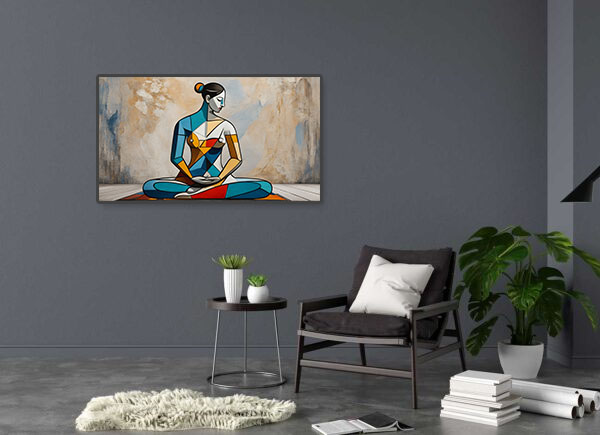Currently Empty: $ 0,00
Cubism is more than just an art movement; it is a paradigm shift that forever changed how we perceive reality in art. Originating in the early 20th century, spearheaded by Pablo Picasso and Georges Braque, Cubism broke away from traditional perspective and representation, encouraging viewers to see the world through a fragmented, multi-faceted lens.
What Is Cubism?
At its core, Cubism deconstructs objects into geometric shapes and reassembles them into abstracted forms. This approach invites the observer to view the subject from multiple perspectives simultaneously, challenging the notion of a singular viewpoint. The style evolved in two major phases:
- Analytic Cubism: Characterized by monochromatic palettes and complex, interwoven shapes, this phase dissects objects into their structural elements, creating a mosaic-like effect.
- Synthetic Cubism: Marking a shift toward brighter colors and the incorporation of mixed media, this phase brought collage techniques and greater emphasis on texture and material.
Why Is Cubism Important?
Cubism’s influence extends far beyond the canvas. It has shaped modern design, architecture, and even the way we think about innovation. By rejecting conventional methods, Cubist artists taught us to embrace complexity and reinterpret the familiar. This radical approach inspired movements like Futurism, Constructivism, and Dada, cementing its legacy as a foundational moment in modern art.
Iconic Cubist Artworks
Some of the most celebrated Cubist pieces include:
- Les Demoiselles d’Avignon by Pablo Picasso, often considered the starting point of Cubism.
- Violin and Candlestick by Georges Braque, showcasing the meticulous dissection of form.
- Still Life with Chair Caning by Picasso, blending collage and painting to blur the lines between reality and representation.
Cubism Today
The principles of Cubism continue to resonate in contemporary art and design. Artists and designers often draw on its geometric abstraction and multi-perspective techniques to push creative boundaries. The digital age has even amplified Cubism’s relevance, as virtual and augmented reality tools allow for immersive, fragmented experiences akin to Cubist ideology.
How to Explore Cubism in Your Artistic Practice
- Experiment with Perspectives: Try sketching an object from different angles and combining these views into a single piece.
- Embrace Collage: Incorporate diverse materials like newspaper, fabric, or photographs to add depth and texture.
- Simplify Forms: Break down subjects into basic shapes, focusing on structure over detail.
Cubism is more than a historical movement—it’s a mindset. By challenging norms and rethinking visual storytelling, it invites us to see the world differently. Whether you’re an artist, collector, or enthusiast, exploring Cubism offers a rich journey into innovation and creativity.
What aspects of Cubism intrigue you the most? Let’s discuss in the comments below!




